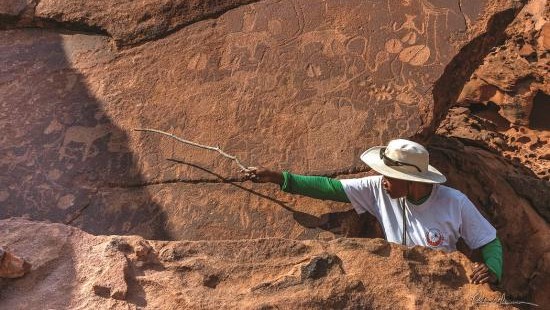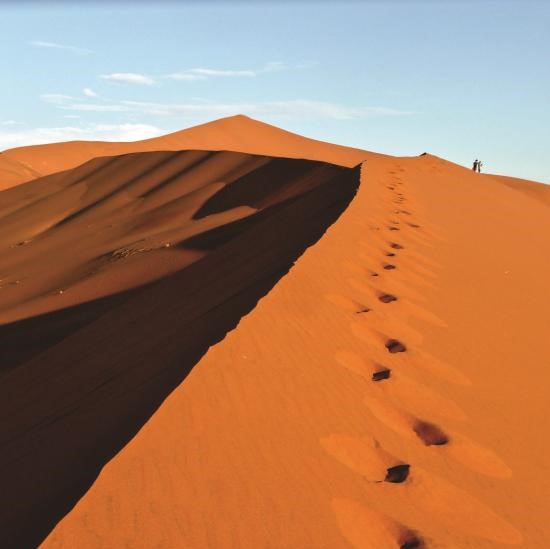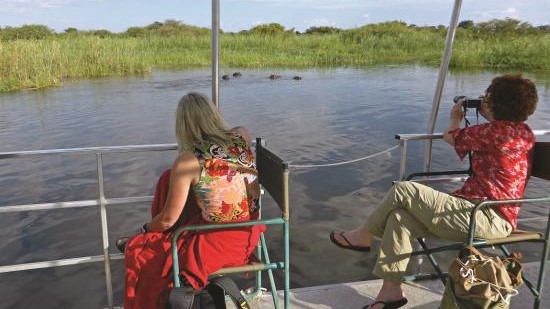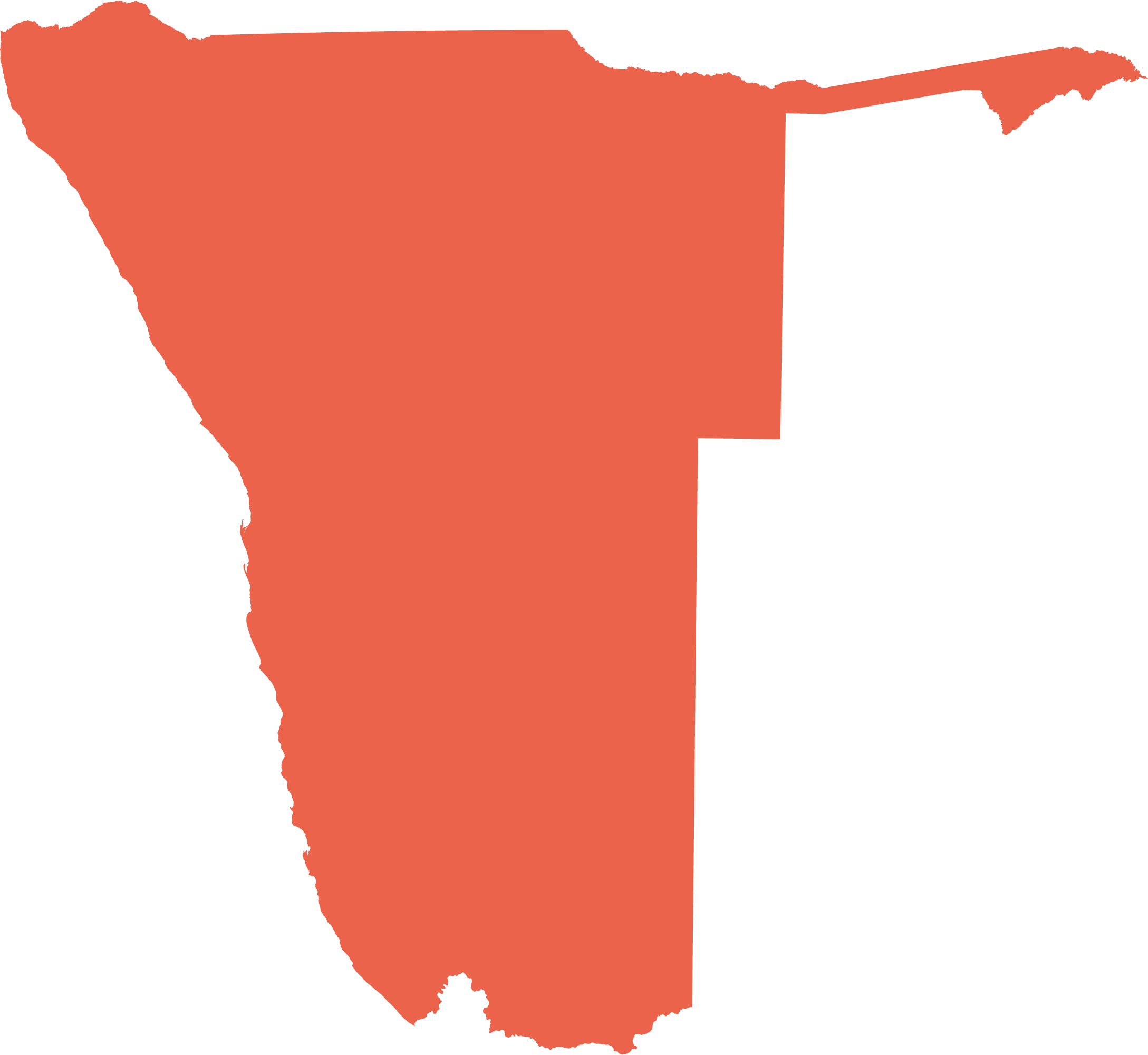Tourism
The dimensions of tourism are large and varied in Namibia. The industry earns a great deal of money, often in foreign currency, and it employs a substantial portion of the formal labour force. Economists regard tourism as second only to mining in its contribution to Namibia’s gross domestic product, and as second only to the public service in offering employment. These estimates are hard to verify because few reliable statistics are available on the tourism industry and on the service industries that support tourism, such as restaurants and crafts.
In economic terms, tourism is an export. Foreign tourists come to Namibia to pay for commodities they value, such as game viewing, spectacular landscapes and experiences in the wild. Other exports, such as diamonds, grapes and beef, are delivered to consumers where they live.
Tourism is often divided into consumptive and non-consumptive sectors. Consumptive tourism includes hunting (figure 8.07) and fishing; non-consumptive tourism mainly involves the senses, with experiences often captured in photographs, or through activities such as hiking and game viewing.
8.08 Non-consumptive tourism, 202012


Non-consumptive tourism has grown enormously in Namibia since independence. Accommodation and other services are widely distributed, but most are clustered around major attractions, such as the coast, the Namib, Etosha National Park, the Fish River Canyon, and rivers in the northeast. From these lodges and campsites visitors venture out to explore nearby attractions, many of which are in national parks owned by the state and managed by governmant agencies. Private farms in the central and southern areas of Namibia also attract and accommodate many visitors. Relatively few tourists visit communal areas or the farming areas in eastern and southern Namibia, however.

Photo: A Jarvis

Photo: R Isaacman
Images in this atlas remind us of the attractions Namibia offers to tourists from faraway countries, South Africa and from within Namibia. Rightfully, Namibia has many measures in place to protect these attractions, many of them enjoying special legal protection: as national monuments, national heritage, national parks, and as specially protected species, such as black rhinos and lions. Rightfully, too, Namibia is active in promoting these attractions: at tourism trade fairs, and in websites, books, magazines and films.
Payments generated by these attractions bring jobs and revenue to Namibia, and provide strong economic incentives to protect the attractions. Protection, promotion, and payments are not enough, however. Together with the attractions must go sound infrastructure, services, and a social and political environment conducive to tourism, for example in good roads, reliable transport, comfortable accommodation, welcoming border officials and effective and efficient public servants. Tourism is a fickle industry. Twice in recent decades tourism in Namibia has come to a virtual halt: in 2000 when French tourists were killed in Bwabwata National Park, and then in most of 2020 and 2021 when most international travel stopped because of the Covid-19 pandemic.
Surprisingly, few reliable statistics are available on tourism, despite its value to Namibia’s economy, the number of people employed in the tourism industry, and the role of tourism in supporting environmental conservation. One problem is that people visiting relatives and friends and/or buying and selling goods in Namibia are recorded in official statistics as tourists. The great majority of tourists' recorded in government reports are therefore from Angola, Zambia, South Africa and Botswana.
However, if most people from elsewhere in the world and reported as tourists were assumed to be in Namibia for leisure in 2019, the majority came from: Germany (38 per cent), France (12 per cent), United Kingdom (10 per cent), United States of America (10 per cent), Netherlands (6 per cent), China (6 per cent), Italy (5 per cent), Switzerland (5 per cent), Belgium (3 per cent) and Scandinavia (3 per cent).13

Photo: A Jarvis

Photo: C Begley

Photo: A Jarvis

Photo: Swakopmund Fat Bike Tours

Photo: A Jarvis

